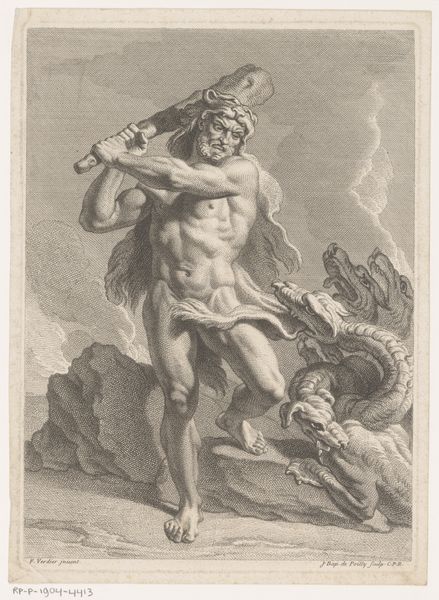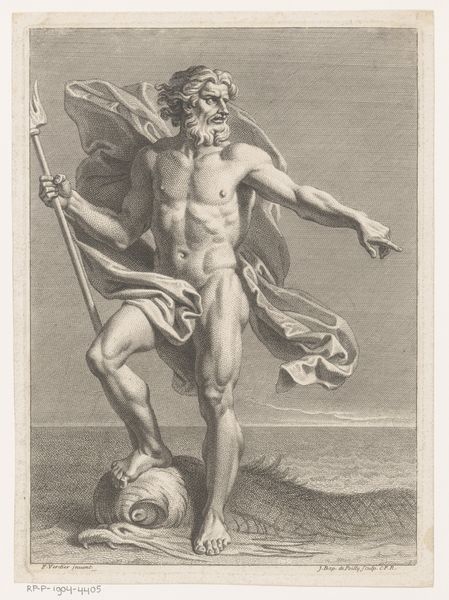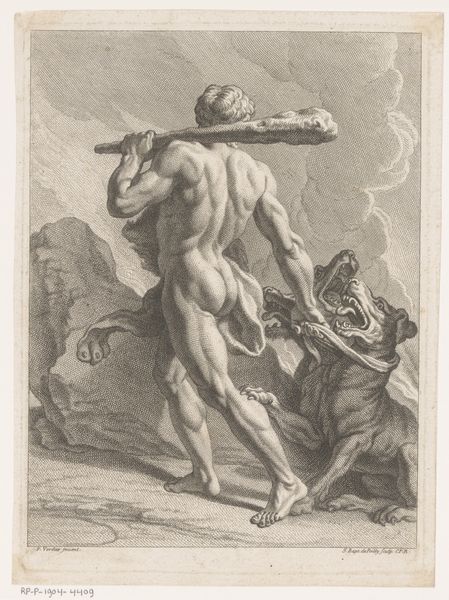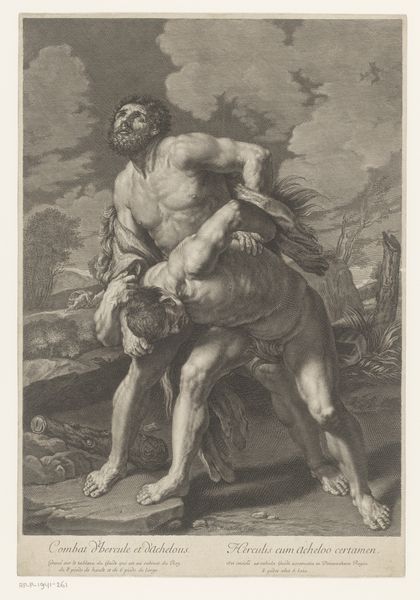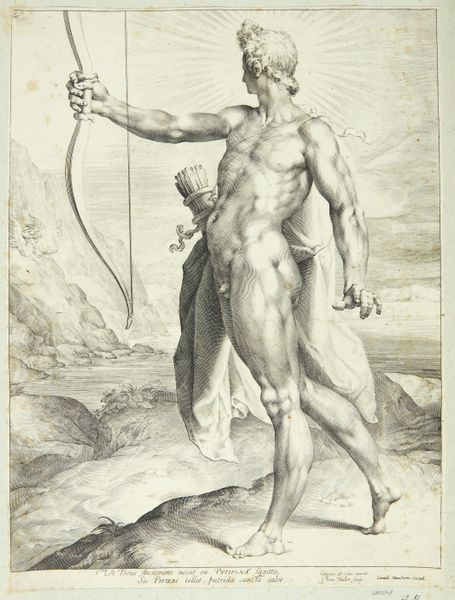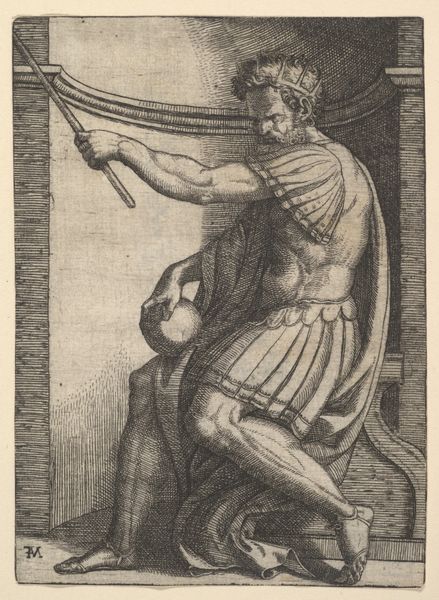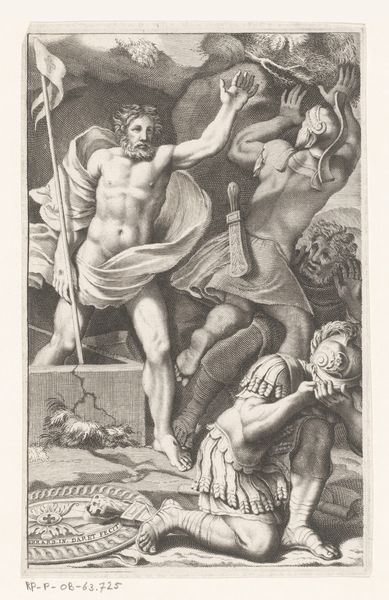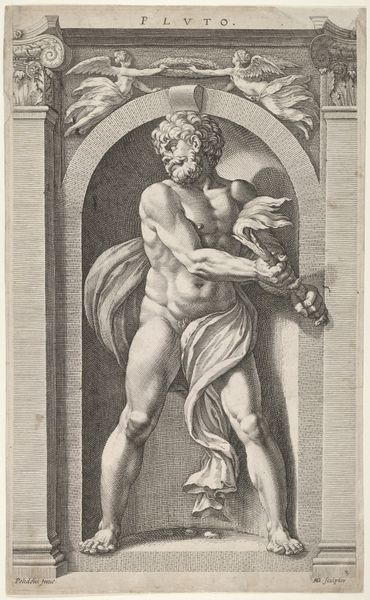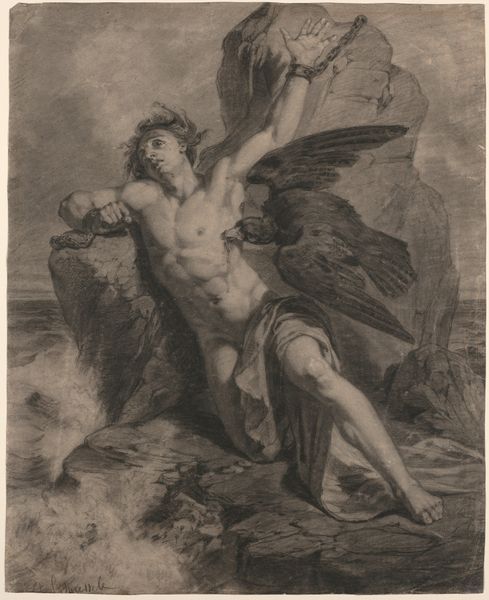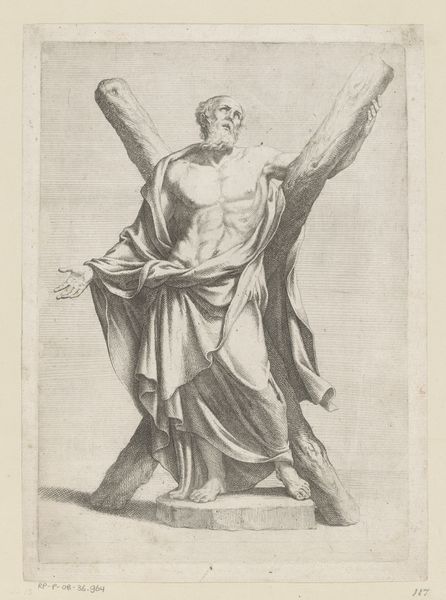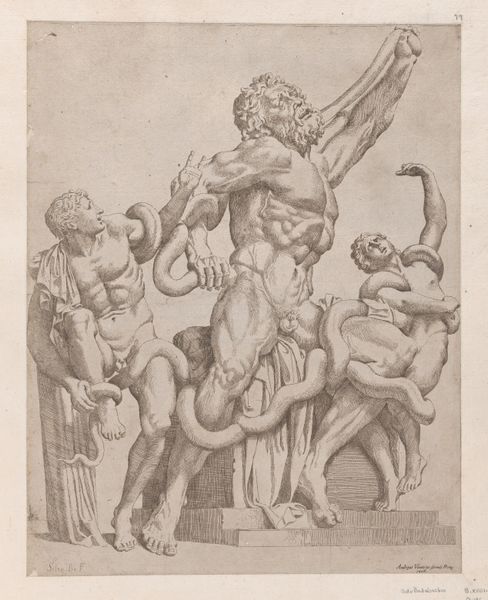
print, graphite, engraving
#
baroque
# print
#
figuration
#
line
#
graphite
#
history-painting
#
nude
#
graphite
#
engraving
Dimensions: height 258 mm, width 188 mm
Copyright: Rijks Museum: Open Domain
Jean-Baptiste de Poilly created this print of a man chained to a wall, possibly Prometheus, sometime between 1669 and 1728. The image resonates with the cultural and political atmosphere of that time. In Poilly’s France, the classical myth of Prometheus, punished by the gods for bringing fire to humanity, was ripe for reinterpretation. The visual codes of bondage and suffering, combined with classical references, create meaning in the context of absolute monarchy. Was Prometheus a symbol of resistance against tyranny? Was this image a critique of institutional power? To understand this print better, it's essential to delve into the political and intellectual history of early modern France. We need to explore how artists responded to social and political structures. By examining contemporary texts and cultural artifacts, we can decipher the complex layers of meaning embedded in this image. The interpretation of art, after all, is contingent on its social and institutional context.
Comments
No comments
Be the first to comment and join the conversation on the ultimate creative platform.
